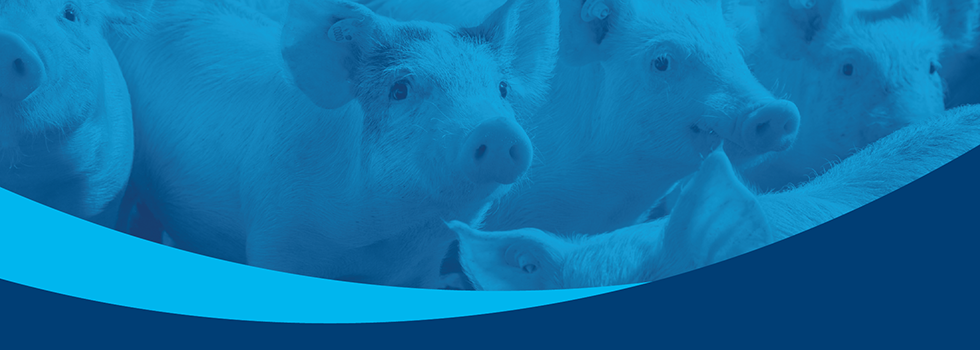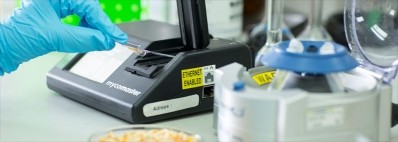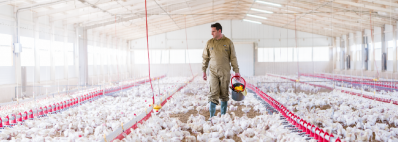Promotional Features
Of mice, men and swine – Lessons from the sun mushroom to maintain swine gut health
Piglets experience significant stress during the critical post-weaning stage driven by changes in diet, housing and production processes. Research conducted by Trouw Nutrition in collaboration with university researchers suggests a novel feed additive ingredient originating in the Brazilian rain forest and referred to in folklore as the Sun Mushroom may help modulate piglets’ natural defense system playing a supportive role in strategies to reduce pathogen exposure.
Below, we look at some questions researchers addressed about this novel feed additive ingredient, its mode of action and how it supports to maintain health in mice, humans and swine.
Are the effects of the Sun Mushroom scientifically proven?
The Sun Mushroom’s scientific name is Agaricus subrufescens, or Agaricus blazei Murill, and research trials confirm its beneficial properties in mice and humans. Many studies have been conducted in mice to evaluate the in vivo effect of this mushroom on the natural defense system, infection and other conditions. In particular, a literature review of the mushroom shows that A. subrufescens offers reasonably well-characterized properties that modulate the natural defense system, as it appears to activate the branch of the defense system that provokes anti-inflammatory effects in mouse models (Hetland et.al, 2008).
In vitro studies have shown that A. subrufescens components stimulate macrophages, resulting in the induction of cytokines and nitric oxide contributing positively to the defense system activation (Sorimachi et al., 2001). Macrophages are a type of white blood cells that are responsible for the immune mechanism called phagocytosis. Meaning “big eaters” in Greek, macrophages surround and digest microbes, foreign substances or any extraneous element not recognized as healthy.
Beyond trials in mice, further trials in humans have evaluated the bioactivity of this mushroom against diseases such as ulcerative colitis among others. Particularly, properties that modulate the defense system were evaluated in a group of healthy people who received Agaricus subrufescens extract and researchers observed that Natural Killers (NK) cell activity was significantly increased (Liu et.al, 2007). NK cells are part of the innate immune system, which means that these cells are not specific to any pathogen, and fight against any strange aggressor. Additionally, a study performed in patients suffering ulcerative colitis showed that patients consuming an extract containing A. subrufescens experienced a significant reduction in fecal calprotectin, which is a marker for inflammatory bowel disease (Forland et.al, 2010).
Why does this mushroom activate the defense system?
The Sun Mushroom’s efficacy in triggering the defense system is due to its sharing pathogen-associated molecular patterns (PAMP) with some other harmful microorganisms. These PAMPs give signals to activate the natural defense system. Some renowned PAMPs are β-glucans, which are part of the cell wall skeleton of mushrooms and have the capacity of being recognized immediately by pattern recognition receptors (PRR) present in organisms (Kumagai and Akira, 2010). This reaction can be exploited by using an innocent mushroom, like A. subrufescens, to enhance the body’s natural protection against serious diseases (Hetland et al, 2011).
How can Agaricus subrufescens be useful for swine?
Like other mammals, pigs are able to respond against pathogens that could harm their health status. When a pathogen is identified, the pig’s immune system is activated. Moreover, a specific “memory” is generated, triggering the pig’s defense system when the same pathogen is detected again.
However, there are consequences to consider. The hyper activation or overstimulation of these mechanisms can lead to local inflammation and energy losses and therefore a reduction in growth. This is the reason why a well-modulated and balanced natural defense system is key to maintaining swine health and enhancing performance. For the same reason, the environment and actual health status of each farm may require a different degree of activated immune system.
Applying the Sun Mushroom to a feed additive
Trouw Nutrition has conducted extensive research studying the usage of A. subrufescens in swine. When referring to the natural defense system, the effects of the feed additive Selko® Fysal® Solute, which contains A. subrufescens mycelium, were evaluated in a collaborative study with the University of Murcia in Spain (publication in process). It was observed that this novel feed additive supported the modulation of the natural defense system of piglets by the upregulation of cytokines and immunoglobulin M and G in blood at a systemic level (Table 1). This may allow pigs to react better after exposure to pathogens and reduce pathogen excretion (Faba et al., 2019).
At the same time, a downregulation of cytokine gene expression and immunoglobulin A producing cells in the intestine was observed, suggesting that the feed additive played a role in reducing local inflammation (Table 2). One reason for this may be the product’s action of blocking pathogenic bacteria from adhering to the intestinal wall; it may also be a result of A. subrufescens fermentation (Faba et al. 2019). This effect should reduce exposure to pathogens and energy losses generated by the exacerbated gastrointestinal inflammatory response that often occurs post-weaning.
“With Fysal Solute being part of the swine gut health programme, supporting the natural defense system, it will be able to maintain animal health and secure food safety” said Ana Belen Cortez Quiroga, Global Product Manager of Fysal Solute.
A legend leads new insights on piglet gut health
While the legend of the Sun Mushroom inspires folklore, science-based research into its mode of action is inspiring innovative approaches to steer gut health.
Table 1 - Systemic anti-inflammatory response in blood at different time points from a group receiving a diet with Fysal Solute in comparison to a control group. Differences shown are statistically significant (p < 0.05). In the case of IgG the difference shown is a tendency (p < 0.1)
Table 2 - Local anti-inflammatory response in jejunum, ileum and colon at different time points from a group receiving a diet with Fysal Solute in comparison to a control group. Differences shown are statistically significant (p < 0.05).
Figure 1 - Natural Defense system: innate (natural) and specific (acquired) response. Adapted image from “Zimmerman et.al. 2012, Diseases of Swine, 10th edition, Wiley-Blackwell”.
References:
Fabà, L., Litjens, R., Allaart, J. and Roubos-van den Hil, P. (2019). Feed Additive Blends fed to Nursery Pigs Challenged with Salmonella. Journal of Animal Science.
Førland, D., Johnson, E., Saetre, L., Lyberg, T., Lygren, I. and Hetland, G. (2010). Effect of an Extract Based on the Medicinal Mushroom Agaricus blazei Murill on Expression of Cytokines and Calprotectin in Patients with Ulcerative Colitis and Crohn’s disease. Scandinavian Journal of Immunology, 73(1), pp.66-75.
Hetland, G., Johnson, E., Lyberg, T. and Kvalheim, G. (2011). The MushroomAgaricus blazeiMurill Elicits Medicinal Effects on Tumor, Infection, Allergy, and Inflammation through Its Modulation of Innate Immunity and Amelioration of Th1/Th2 Imbalance and Inflammation. Advances in Pharmacological Sciences, 2011, pp.1-10.
Hetland, G., Johnson, E., Lyberg, T., Bernardshaws, S., Tryggestad, A.,Glinde, B. (2008). Effects of the Medicinal Mushroom Agaricus blazei Murill on Immunity, Infection and Cancer. Scandinavian Journal of Immunology 68, pp. 636-370.
Kumagai, Y. and Akira, S. (2010). Identification and functions of pattern-recognition receptors. Journal of Allergy and Clinical Immunology, 125(5), pp.985-992.
Liu, Y., Fukuwatari, Y., Okumura, K., Takeda, K., Ishibashi, K., Furukawa, M., Ohno, N., Mori, K., Gao, M. and Motoi, M. (2008). Immunomodulating Activity ofAgaricus brasiliensisKA21 in Mice and in Human Volunteers. Evidence-Based Complementary and Alternative Medicine, 5(2), pp.205-219.
Sorimachi, K., Akimoto, K., Ikehara, Y., Inafuku, K., Okubo, A. and Yamazaki, S. (2001). Secretion of TNF-.ALPHA., IL-8 and Nitric Oxide by Macrophages Activated with Agaricus blazei Murill Fractions in Vitro. Cell Structure and Function, 26(2), pp.103-108.







